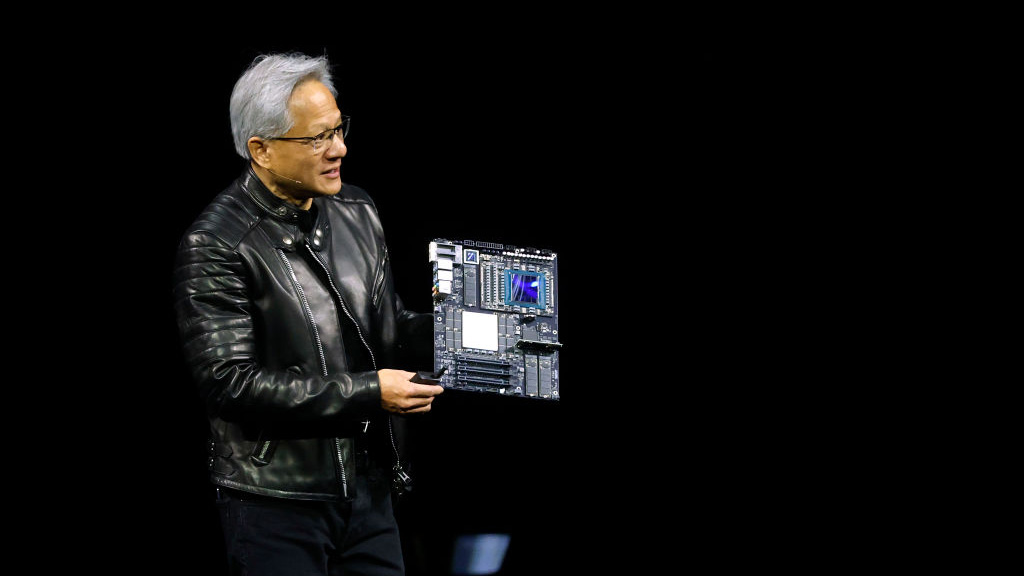Google I/O Blockbuster Keynote: Jelly Bean OS, Nexus 7 Tablet, and Project Glass Goggles Unveiled
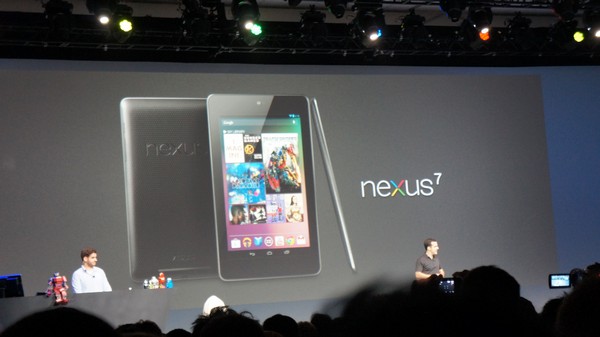
At an exciting two-hour keynote address, Google executives unveiled a variety of groundbreaking new products, including its next-generation Android "Jelly Bean OS," the long-anticipated Nexus 7 Tablet, a sphere-shaped media computer called the Nexus Q and a major update to Google+ which allows users to share events. Google co-founder Sergey Brin also took the stage to show off the company's Project Glass augmented reality goggles.
Jelly Bean
After Google SVP of Social Vic Gundotra gave some opening remarks, Android Director of Product Development Hugo Barra took the stage and talked about the success of Android, saying that 400 million devices have now been activated. He then introduced David Burke, who spoke about the next version of Android, coined Jelly Bean.
"In Jelly Bean we also introduced triple buffering in the GPU pipeline," Burke said, referencing the company's Project Butter initiative. The result should be a faster and more responsive UI. He then showed a video comparing the speed of Jelly Bean with Ice Cream Sandwich.
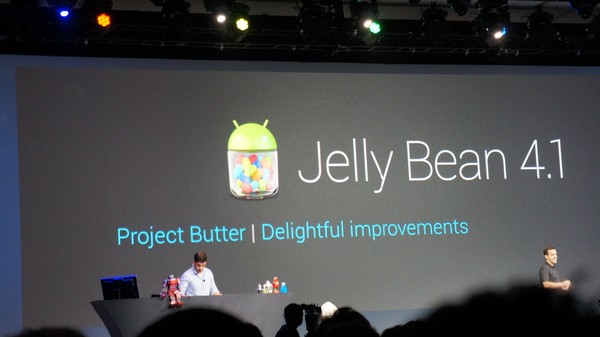
Barra also showed a new feature of Jelly Bean that allows you to move other icons over when you move widgets around or shrink large widgets to fit icon-filled home screens.
Barra talked about voice typing and announced that users will now be able to use the feature offline. To show this feature, a demo guy named Randall put his phone into airplane mode and dictated a simple sentence to it.
He also talked about Jelly Bean's new accessible features. He said Android has added support for external Braille devices and other assisting technologies.
Stay in the know with Laptop Mag
Get our in-depth reviews, helpful tips, great deals, and the biggest news stories delivered to your inbox.
Barras discussed how quickly the camera app will allow you to preview photos you've taken. Pinch out in the app and you can see a film strip of your photos.
In Jelly Bean, you'll also be able to use new Android Beam features. Barra said you'll be able to share photos by tapping phones and pair with external devices using NFC.
He then spoke about notifications. With the new Jelly Bean notifications, he showed that you'll be able to dial missed calls from the notifications pull down or view your Gmail messages without actually going into the app. He also showed how you can expand the size of notifications by pinching or dismiss them by swiping them off.
"Simple tasks should never require complex procedures," he said.
Barra then spoke about the improved search feature. He first demonstrated the new UI, which gives you card-based answers instead of just results when you ask questions such as, "Which movies has Angelina Jolie been in?"
He then introduced Google Voice Search and had Randall ask it questions like, "Who is the prime minister of Japan?" and "What is a robot?" In all cases, Jelly Bean's search app gave him large and accurate card-based answers rather than a list of search results in response to his questions. It even showed him a gallery when he said, "Show me Pigmy Marmosets."
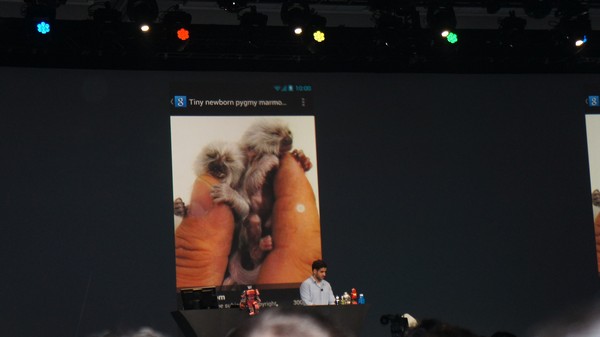
He then talked about Google Now, a new feature that helps you get through your day. He showed the new Jelly Bean maps and their ability to use traffic data to show you exactly how long your commute should take. Google Public transit will give train and bus schedules.
He demoed Google Places, which will show you restaurants and points of interest as you walk down the street. He showed off Google appointment, which tells you when to leave so you make it to your meeting on time. Jelly Bean also keeps track of your flight status.
Google Sports keeps track of you favorite sports team's scores and knows what they are based on your prior searches. Google Travel provides currency conversions.
A Google rep then came on stage to give a full demo of Google Now and show its ability to help him plan his day. Barra said users of the Galaxy Nexus phones will get an OTA update to Jelly Bean in mid-July and the SDK with it will be available to developers today.
Google Play Update
A Google rep then took the stage to talk about improvements in Google Play. With Jelly Bean, all apps will be encrypted to avoid piracy. And the new Google Play system will also support Smart App Updates, which download only the parts of an app's APK that have changed.
He announced a new service called Google Cloud Messaging, a service which allows developers to send C2DM messages from the cloud directly to their apps on users' devices.
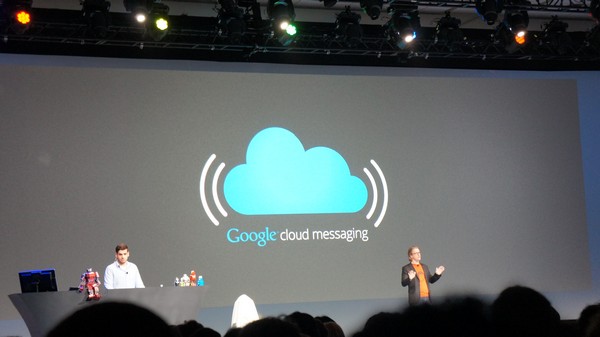
He also spoke about the amount of music, movies and books available on Play, saying that it has the largest e-book collection on the Web. He announced that, starting today, users will be able to purchase movies and TV shows, not just rent them. Starting today, Play will also have a new magazine section that features titles from large publishers such as Hearst and Conde Nast.
Nexus 7 Tablet
Barra then announced the long-anticipated Nexus 7, which will come with Jelly Bean. Manufactured by ASUS, the 7-inch slate will have a 1280 x 800-pixel display with a Tegra 3 quad-core CPU and 12-core GPU. It will also have a front-facing camera, Wi-Fi, Bluetooth, NFC and an Accelerometer. He said the 340-gram Nexus 7 will last a full 9 hours on a charge when playing HD video.
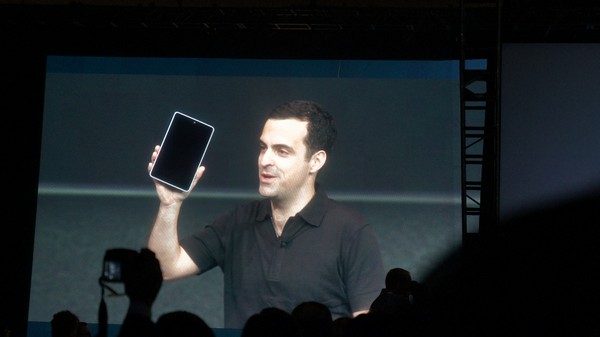
He called up a Google rep to demo the Nexus 7. As we watched, he showed us how the new interactive magazines and TV shows look on the 1280 x 800-pixel display. He then showed the maps app and announced that it will support offline maps. He showed off two games that take advantage of the device's GPUs: an adventure game called "Horn" and a first-person shooter called "Dead Trigger."
Barra said that the Nexus 7 will cost $199 and come with $25 of credit from the Google Play store. You can order the Nexus 7 starting today with orders shipping in mid-July.
Nexus Q
Google's Matt Hershenson and Joe Britt then took the stage to unveil a tiny spherical computer called Nexus Q. A small black sphere, the Q attaches to your home entertainment system and the cloud. It sports a dual-core TI OMAP 4430 CPU, so it's powerful enough to handle any apps you throw at it. It has dual-band Wi-Fi, Ethernet, NFC, Bluetooth and microUSB connections.
In a demo, Google showed how the Nexus Q lets you listen to music in any room in your home and control it from your Android device. He even showed how multiple users could control the music and play tunes from their Play libraries.
They then demonstrated how you can control cloud-based movies on the Nexus Q from an Android device, resuming a "Transformers" movie they had already started watching before on another device. They sent it to the Nexus Q, which then sent it to the TV. They also showed how they could play YouTube videos on the Nexus Q by using a tablet to control the experience.
The "world's first social streaming device" will cost $299 and users can pre-order starting today.
Google+ Events
Vic Gundotra took the stage again to talk about Google+. He showed a video extolling the virtues of the company's social networking platform by showing how some users attached a streaming space telescope to the service.
"We now have a vibrant community of astronomers on Google+," Gundotra said. "Millions of people are finding ways to connect with each other."
He said that in just one year the service can boast 250 million sign ups, 150 milion monthly users and 75 million daily users who spend an average of more than 12 minutes a day, up from 9 minutes a few months ago. He also said that more users access Google+ from mobile than from desktop.
Gundotra then announced the new Google+ app for tablets. He called on the demo guy to show off the new Android tablet app and its beautiful side scrolling stream of photos and updates. He also showed off the Hangouts feature on a tablet and how large and smooth the video window was. He also said that the Android phone version will be updated today and an iPad version will be available next month.
He then unveiled a new feature called Google+ events, a new tool for organizing parties and other events. In a demo, Gundotra showed how an party organizer can send out a gorgeous invitation on Google+, complete with an attractive background, before an event. During the event, users can log into a new "Party Mode" that allows them to share their pictures in real-time. He demonstrated this feature in action: At a wedding held by a Google engineer, guests took photos and after the service compiled a great collection of photos from all the guests. Gundotra highlighted the images which got +1s.
Project Glass
Sergey Brin then interrupted Gundotra and took the stage for one of the most exciting demos we've ever seen. Wearing a pair of Project Glass AR goggles, Brin conducted a Hangout with two skydivers, and the audience watched from their perspective as the athletes jumped out of a plane, landed on the roof of the Moscone center and then repelled down the side of the building and rode a bike through the convention center to make it to the stage.
Brin then called a product manager on the stage to talk about how Project Glass works. He revealed that the device has a variety of controls including a touchpad on the side, multiple radios for broadband communication and a variety of scopes and cameras.
Proejct Glass lead designer Isabell Olsson came up to talk about the design philosophy behind Glass. She said that the device is designed to be close to your senses but not block them, and that's why it sits above the eye. She spoke about how a mother should be able to have eye contact with her baby but still record it.
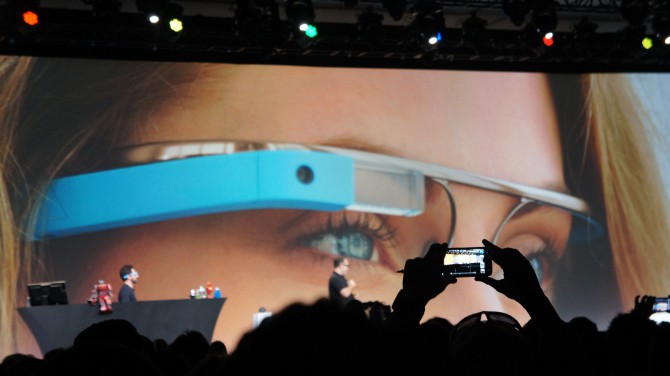
She said that Glass is designed not to take away from the user's individuality by having a bold design. While she didn't disclose an exact weight, she also announced that it weighs less than many pairs of sunglasses. Olsson also said the company wants Glass to work for people with glasses, so it will be available in a variety of sizes, colors and form factors.
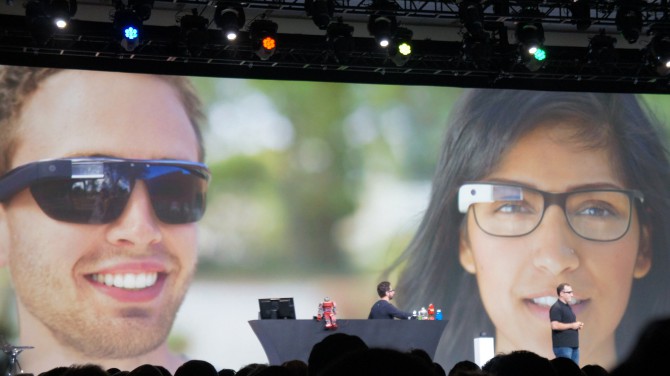
The Google product manager then spoke about the impetus behind Project Glass. He said communication using images is the key. "When you have a camera that's always with you, you can catch fleeting moments in your life," he said. He said that Glass is great for parents because you can capture important memories without running to get a camera.
The product manager also said since Project Glass goggles capture images from your perspective, they enable a different kind of memory. It's a way of recording memories from a first-person perspective.
"What really excites me about this is how easy and seamless it is to share," Olsson said. She showed how first person shots could help your friends learn how to cook what you cooked or help them identify with your pain while you're sitting in a dental chair.
The product manager said that another benefit of Glass is the ability to find information more quickly than you can with a phone. He said that the team hopes to someday make the query process so quick that information feels like it's part of your knowledge base, not just something you searched for.
Olsson then introduced a video showing a mom using Glass goggles with her baby daughter, taking photos and sharing them with the child's father.
Brin came back on stage to talk about Glass again and announced that the Google Glass explorer edition developer kit is available for pre-order for U.S.-based attendees of Google I/O. The device will cost $1,500 and won't ship until next year, and only I/O attendees will be able to order it.
Wrap Up
Vic Gundotra came back on stage and said he never expected to have a "Taylor Swift" moment, referring to the time the singer was interrupted on stage by Kanye West. Gundotra then showed a wrap-up video about Google+ Events.
"The best thing is for computers to have your back and then you don't have to worry about them," he said. "Then you can focus on your life," he said. Gundotra announced that the first Google+ event will take place tonight at the Google I/O After Hours party.

